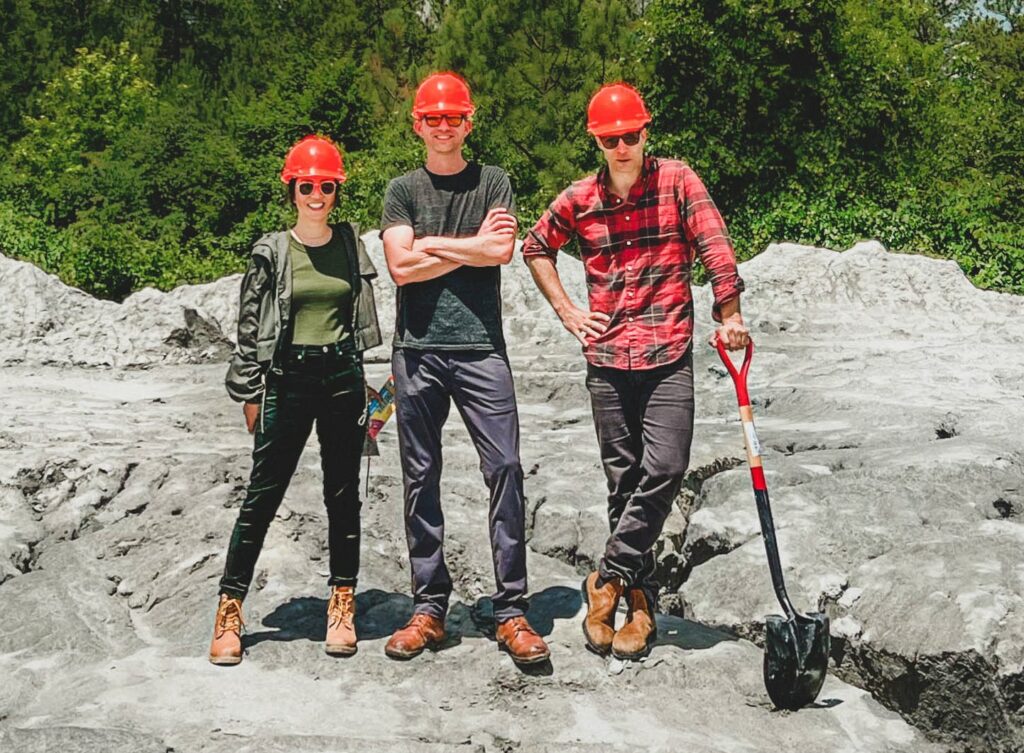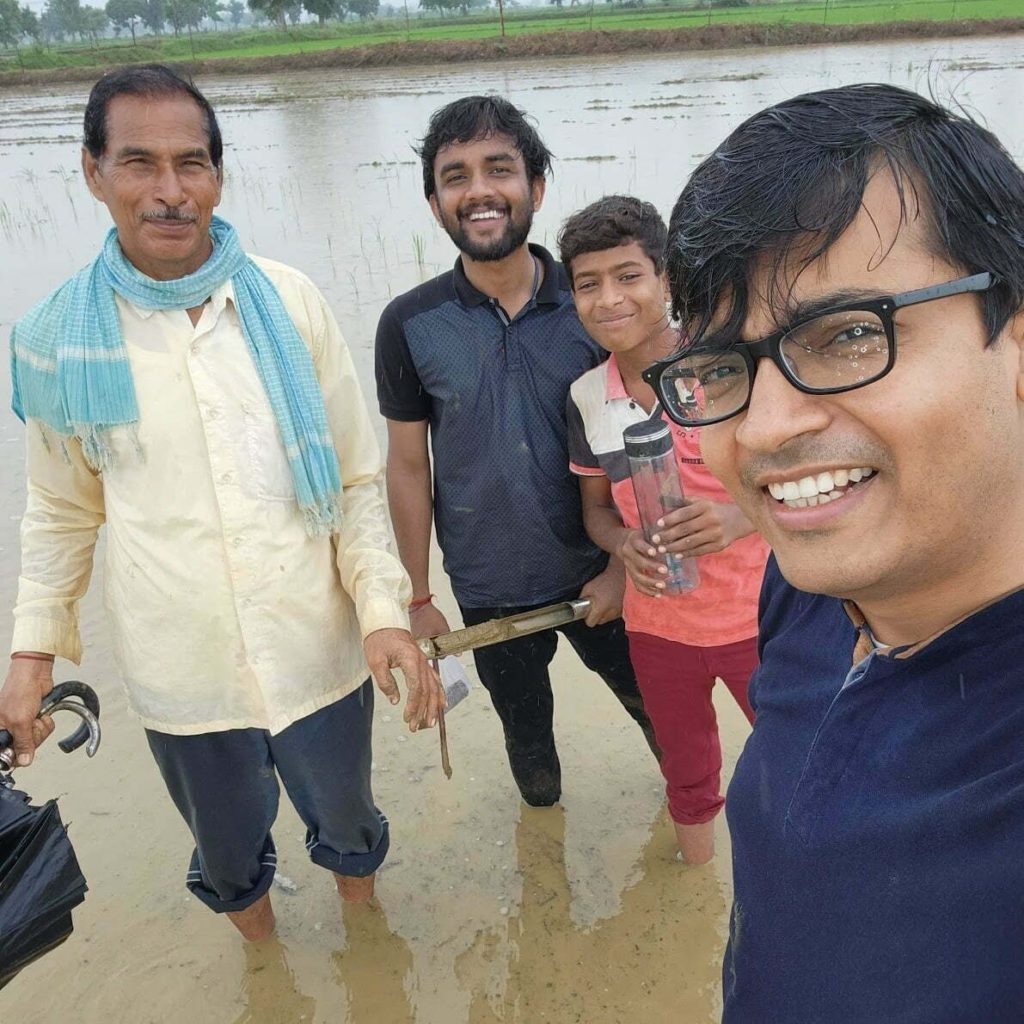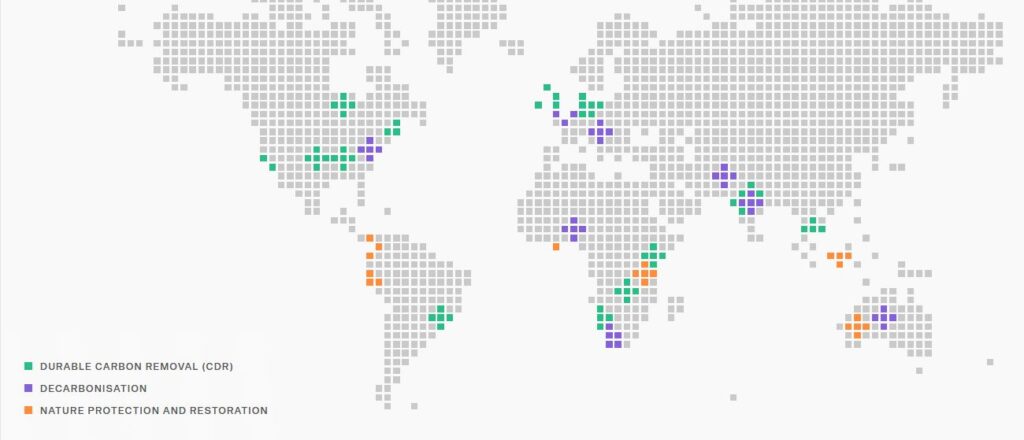Funding the “Missing Middle” – How to Scale Up Climate Solutions
Map of Milkywire Climate Transformation Fund projects

The term “missing middle” refers to the funding gap between early-stage innovation and large-scale commercial deployment. While the missing middle concept has become a mainstay in climate conversations – appearing in investment panels, policy discussions, and startup pitch decks – the real-world implications, especially for emerging carbon removal technologies like enhanced rock weathering (ERW), remains under-explored.
ERW technologies like those developed by Lithos Carbon, Undo, and Eion are gaining attention for their dual benefits of carbon sequestration and soil enhancement. These technologies leverage naturally occurring rock weathering processes, accelerated by spreading finely crushed silicate rocks on farmland, to trap atmospheric CO₂. Yet despite the environmental promises of ERW, scaling these solutions faces structural funding challenges.
“Many startups fall into a funding dead zone, too mature for venture capital but too risky for traditional project finance.”
For ERW startups, the journey begins with promise. They attract venture capital to test and develop innovative technologies, but once they move beyond proof-of-concept and need significant capital to scale, such as building full-scale deployments or securing commercial traction, they face obstacles. Large infrastructure investors often shy away from a company until it has multiple large-scale projects under its belt. As a result, many startups fall into a funding dead zone, too mature for venture capital but too risky for traditional project finance.
The issue becomes even more complex with First-of-a-Kind (FOAK) projects, which are defined as large-scale, real-world deployments of new technologies. These are essential milestones but come with substantial capital requirements and execution risks. Without patient capital, creative financing models, or public-private collaborations, FOAK projects often stall, leaving scalable climate solutions stranded at the very point they need to grow.
Enhanced Rock Weathering: A Case in Point
An outstanding exception is Microsoft, which made headlines in 2024 by signing a new agreement with Lithos Carbon. Lithos Carbon’s vision of transforming croplands into carbon sinks using crushed basalt rock is catalyzed by this partnership with Microsoft, in which the tech giant committed to a three-year deal to fund the removal of over 11,400 metric tons of CO₂, building on a previous successful removal of 500 tons. The partnership is part of Microsoft’s broader commitment to becoming carbon-negative by 2030, and showcases how the missing middle can be bridged through strategic corporate partnerships. Corporate leadership can help fill the funding dead zone that many climate tech startups struggle with.
Microsoft’s partnership strategy reflects a rare commitment to overcoming the obstacles for growth beyond the start-up phase. By investing in multiple ERW companies across different regions (Lithos in the U.S., Undo in the UK and Canada, and Eion in the Mid-Atlantic U.S.), Microsoft is effectively acting as a bridge lender, reducing risk for early deployments and building confidence in these technologies for future private investment.
Other organizations are also building platforms to finance carbon removal. Milkywire is also stepping into this underfunded space to help scale up promising projects. Through Milkywire’s Climate Transformation Fund, they have supported Mati Carbon and Flux, two major organizations demonstrating and implementing enhanced rock weathering (ERW) globally. As these projects progress, they can serve as a roadmap for other companies seeking funding.
Beyond FOAK

Even after completing a successful FOAK project, startups face another hurdle: replication at scale. One demonstration plant does not guarantee investor confidence. Early deployments often suffer from cost overruns and inefficiencies, raising concerns about financial viability. Startups may prove their technology works, but not yet that it works economically, leaving them stranded once again in the missing middle.
Lithos Carbon’s multi-state farmer network and increasing volume targets signal promising scalability. Their continued success, and that of other ERW startups, depends on broader shifts in investment behavior. Climate investors must be willing to engage with mid-stage risks, understanding that these are not traditional climate solutions but infrastructure-heavy solutions with long-term impact.
What’s Next
The good news is that the tide may be turning. With major players like Microsoft not just investing but also validating, it may now be possible to fill the gap in the missing middle. Government entities like the U.S. Department of Energy’s Loan Program Office also stepped in, pushing billions into promising climate tech sectors. Unfortunately, that funding ended due to recent cuts from the current administration.
The market still needs more – more blended finance, corporate procurement, more catalytic capital, and more industry leaders like Milkywire that dare to take bold steps. Unless investors learn to fund the missing middle, even the most brilliant climate innovations may never become reality.
Sharan Dhillon is an MBA candidate with a focus on marketing and a knack for social media strategy, content creation, and brand engagement. He specializes in crafting impactful, community-driven content across Instagram, LinkedIn, and Facebook to drive growth and foster connections. His experience spans roles like Social Media Strategist at Florence Fang Community Farm, where he collaborated on building engagement strategies, enhancing brand presence and generating B2B leads. Beyond work, he enjoys getting his hands in the soil through gardening and farming – a natural extension, coming from a farming family! Feel free to check out his work and connect through LinkedIn: https://www.linkedin.com/in/sharanpreetsinghdhillon/
Support us on Patreon
Thank you for joining us today! Please become a member of RTE and support us on Patreon. Unlike many larger organizations, we work with a team of determined and passionate volunteers to get our message out. We aim to continue to increase the awareness of remineralization to initiate projects across the globe that remineralize soils, grow nutrient dense food, regenerate our forests’ and stabilize the climate – with your help! If you can, please support us on a monthly basis from just $2, rest assured that you are making a big impact every single month in support of our mission. Thank you!









Got something to say?